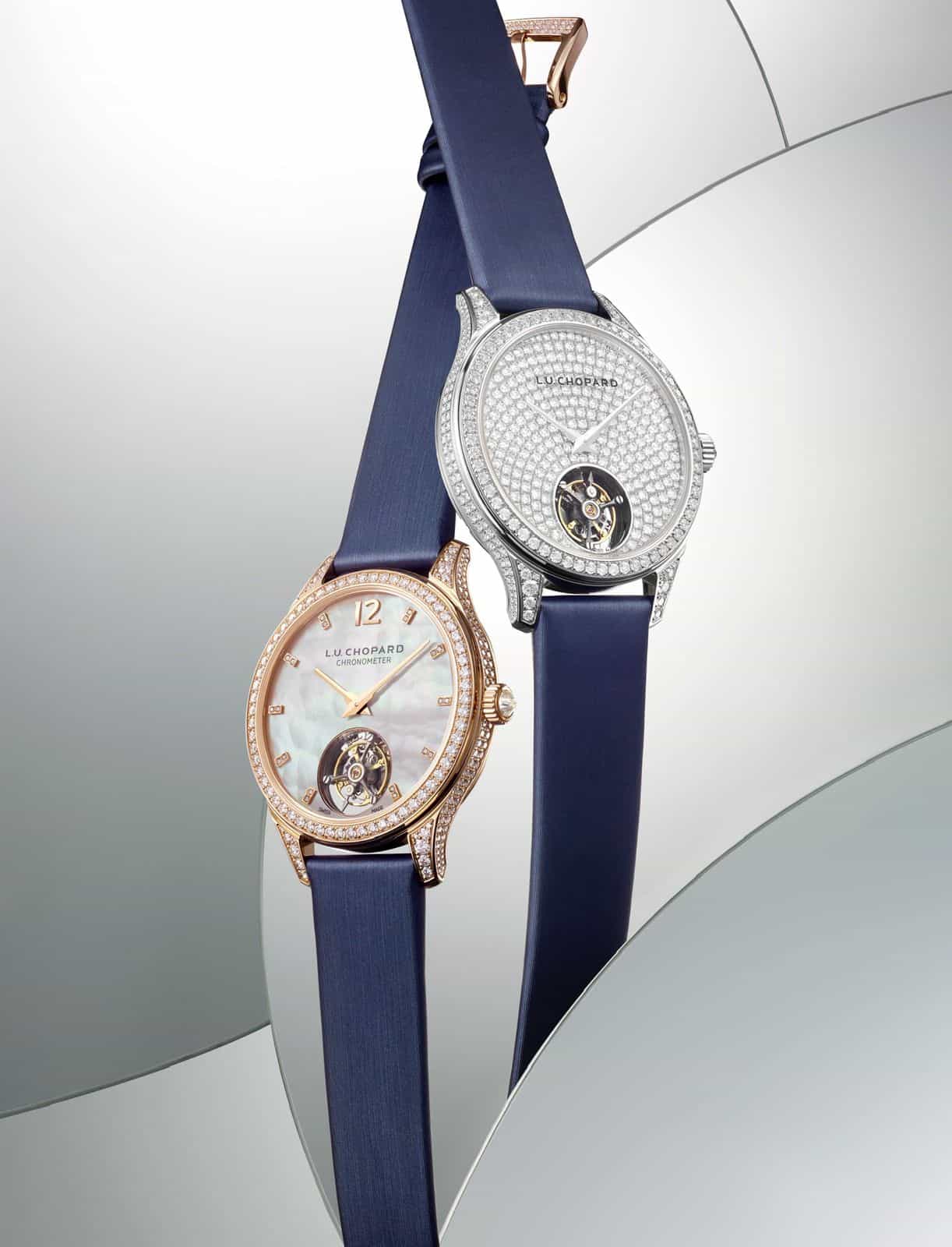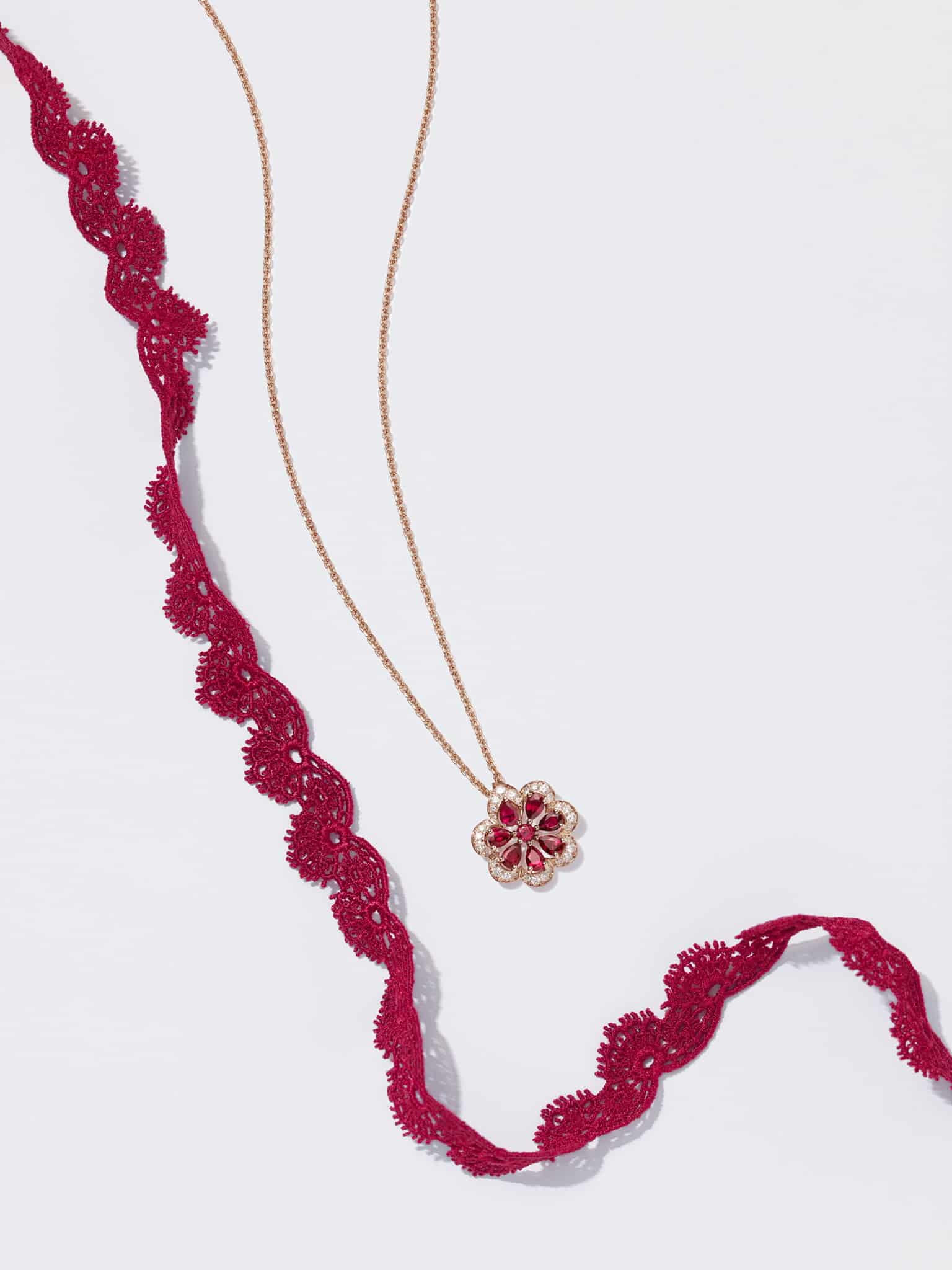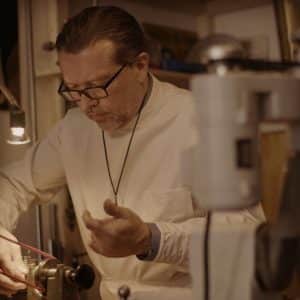Journey through space with Louis Moinet, Switzerland
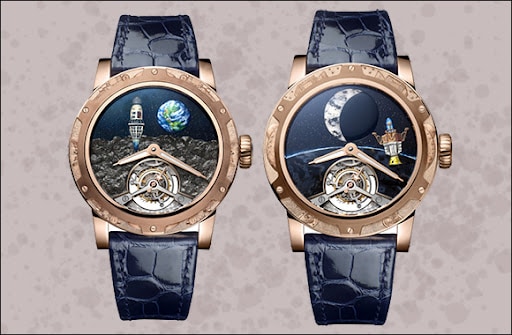
Journey through space With Louis Moinet, Switzerland
may be « Moon Race » (Space Race) more Thrilling epics in The modern era.
This space race is embodied in four main episodes in the conquest of Moon. version collects Among the finest craftsmanship, a lunar meteorite and the finest natural stones. These four creations feature an authentic part of the spacecraft that shaped history. Each of them traveled over a million kilometers in interplanetary space before being presented in a Louis Moinet travel boxLouis Moinet , which invites you to a journey through space.
The first landing on the moon | 1966
كان Luna 9 It is the Soviet space probe that made the first soft landing on the Moon. It was a real breakthrough at the time, achieved after a long series of failures. Soviet astronautics lost 26 space probes between 1962 and 1965 without recording a single success.
Probe launched Luna 9 On January 31, 1966 from the Baikonur Cosmodrome, and landed in the vicinity of storms (Oceanus procellarum) On February 3, 1966, to send the world the first panoramic pictures of the moon's surface.
The first landing on the moon | 1966
The dial of the watch embodies the soft landing of a probeLuna 9. The image of the spacecraft was hand-engraved and then completely painted over. It includes an original piece of woven fiber from Luna 24. This piece made the journey from Earth to Moon to Earth again - more than a million kilometers through interplanetary space - on board Luna 24.
has been engravedMoon Completely handcrafted, then painted black the old-fashioned way to give it an opaque look.
The sky is made of australite. australite Black, also known as aventurine glass. This material has been preserved for over 50 years for use in major artwork. Its sparkles of countless particles are like gold, twinkling stars against the background of the pure sky.
The Earth is depicted in a highly detailed miniature painting, which stands out against the background of the sky thanks to the scale of its motifs.
Hand carved on the frame
These inscriptions represent a probe Luna 9, in addition to the capsule landing on the surface of the moon. It was launched just before the lunar impact, and then separated from the rest of the spacecraft. The 100-kilogram capsule hit the lunar surface at a speed of 4-7 meters per second, protected by an airbag. This capsule captured the first images of the moon and sent them to Earth via its antenna.
Mechanism - caliber LM 35
A 60-second tourbillon movement, won the gold medal in the last international horological competition.
Human landing on the moon | 1969
While the Russians were trying to send a crew to the Moon, the United States organized a succession of Apollo space missions, getting closer and closer to achieving that goal..
It was the Apollo 11 mission that enabled humans to set foot on the moon for the first time.
left missile Saturn V The giant Kennedy Space Center on July 16, 1969, and the rocket crew landed on the Night Star (Moon) on July 21, 1969..
The first steps on the moon were filmed by a video camera and broadcast live, in an event watched by hundreds of millions of people around the world.
Human landing on the moon | 1969
Represents a version ofMan on the MoonContemporary Christopher Columbus, the first man to walk on the moon! His astronaut suit is hand-carved and colored using the miniature painting technique. His mask is an authentic part of the polyimide film that has protected his spacecraft across a wide range of temperatures (-250°C to 400°C). This material was used to travel from Earth to the Moon and back to Earth—more than a million kilometers in interplanetary space—on Apollo 11.
The miniature painting on this mask is a reflection of the lunar module. In order to achieve the smallest details, the painter cuts the brush hairs one by one, using only the last one to create the finest decorations..
The moon represents a real lunar meteor called Dar Al-Jani 400.
This lunar anorthosite is a rock found on Earth in 1998 and was launched from the moon after the collision of one of the celestial bodies.
The Curved Earth is embodied in the “azure stone” that the greatest civilizations have used for 7,000 years: lapis lazuli. It floats in the sky of exceptional quality made of black aventurine.
Hand carved on the frame
These inscriptions represent a missileSaturn V The famous space launcher developed in the 100s for the Apollo moon program. This massive rocket is over 3,000 meters high, weighs 11 tons, is powered by 45 engines and can launch XNUMX tons of payload to the Moon..
The inscriptions in the center show Human first steps on the surface of the moon, while those inscriptions at the bottom show the foot pads of the Apollo lunar module as it landed.
Mechanism - caliber LM 35
The 60-second tourbillon movement, which won the gold medal in the last international horological competition.
around the moon | 1970
Apollo 13 is the third mission in the space program to carry a human crew to the moon.
Upon landing in the Fra Mauro crater, the impact site of the asteroid impact, a serious accident damaged the spacecraft. The mission was abandoned, and the return trip required going around the moon before returning to Earth.
So, did Apollo 13 succeed or fail? The end was not achieved, of course, but this extremely dangerous expedition can be considered one of the most remarkable rescue operations ever carried out. The credit for returning to Earth is owed to the unwavering will and perseverance of humans, from the crew to the Houston Control Center.
around the moon | 1970
depicted version”Around the Moon“The amazing rescue of the Apollo 13 mission, which succeeded in reaching Earth with a severely damaged spacecraft.
The spacecraft is hand-carved and then enhanced with a portion of a polyimide membrane that protected it on the re-entry flight, particularly as it re-entered the atmosphere.
This substance moved from the Earth to the orbit of the Moon and then returned to the Earth. incisive Over a million kilometers across interplanetary space aboard Apollo 13.
The spacecraft can be seen heading towards Earth, after orbiting the Moon. Agate, a variety of agate used since antiquity due to its pitch-black colour, represents the mysterious face of the night star. It was inlayed on granite from the Bernese Oberland, which was found by Daniel Haas at an altitude of more than 2000 metres.
Was selected pietersite Blue from Namibia in reference to the beauty of the land. Its shimmering effect is due to the many multi-colored fiber components that give it bluish tones with an incomparable silky appearance.
australite Black completes the picture. This material has a history, with its origins going back to Murano at the beginning of the XNUMXth century. It's the product of a lucky mistake - when a glassmaker dropped copper filings into molten glass that had slowly cooled - and its name derives from the Italian word for "all'avventura. This is why australite Also known as aventurine, or even river gold.
Daniel Haas' father acquiredaustralite who decorates a watch Moon Race It is carefully preserved, and our partner in the field of exceptional stones. The Haas family has been a pioneer in accessing and cutting natural stone harbors for two generations.
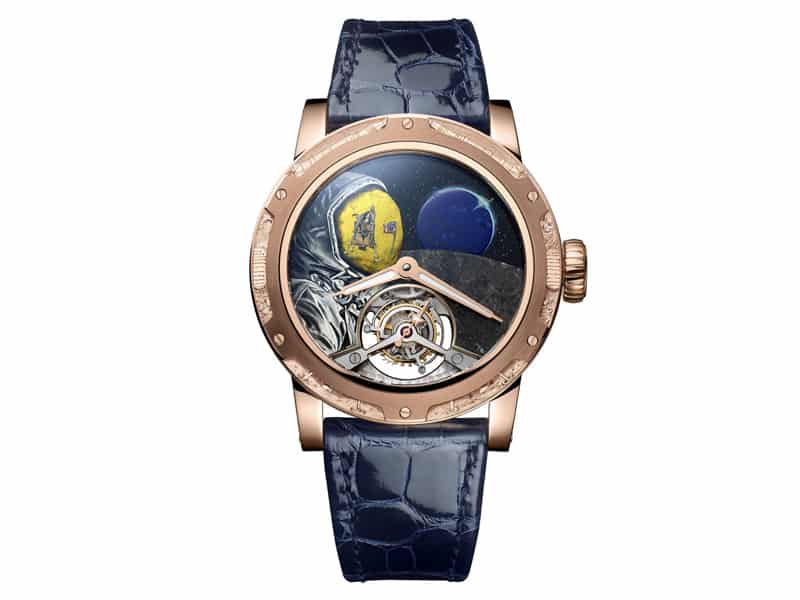
Hand carved on the frame
These inscriptions represent a service Odyssey and the Command Module, which is the only one capable of returning the mission's crew to Earth with its heat shield.
In the middle, it shows a view Moon Earth remote, which is the ultimate purpose of the mission at risk. Finally, we see the Command Module that has landed in the Pacific Ocean.
Mechanism - caliber LM 35
The 60-second tourbillon movement, which won the gold medal in the last international horological competition.
The last expedition to the moon the moon | 1976
Luna 24 It is the last probe from the program Luna Landing on the moon, in the area Mari Crisium undiscovered. The probe returned 170 grams of lunar soil samples (the regolith). The analysis of these samples proved useful, as it proved the presence of water on the lunar regolith.
After landing on the moon on August 18, 1976, she returned Luna 24 to Earth (Siberia) on August 22, 1976, to be the conclusion of the . program Luna, which started with a probe Luna 1 In 1959, as well as a probe Moon Race - Moon Race launched in 1961.
A new probe did not reach the Moon until 32 years later (Moon Collision Probe, India). China also sent a probe (Chang'e 3), but in a controlled fashion (smooth landing) in 2013, and then brought it with it samples from the moon in 2020 (Chang'e 5).
The last probe to the moon | 1976
"Last on the MoonIt is the last episode ofMoon Race. It was one of the results Luna 24 It is proof of the presence of water on the moon.
filmed Luna 24 On her journey to Earth. Its exquisite design is hand-carved, and its side is adorned with a real piece of Luna 24(braided fiber covered with resin). This substance has traveled more than a million kilometers through interplanetary space from Earth to the Moon and back to Earth again on board Luna 24.
The moon is shown here in high contrast, with copper engraving to highlight its nozzles.
Another of nature's mysteries, azurite is transformed into malachite through a phenomenon known as pseudomorphogenesis. This transformation allows her to retain part of her appearance while switching to malachite. The result is a very special mineral: azurite - malachite, perfectly embodying the earth.
Complemented by a yellow sun type pietersiteWhich fully deserves the nickname "Storm Stone". Light up the sky with exceptional quality black aventurine.
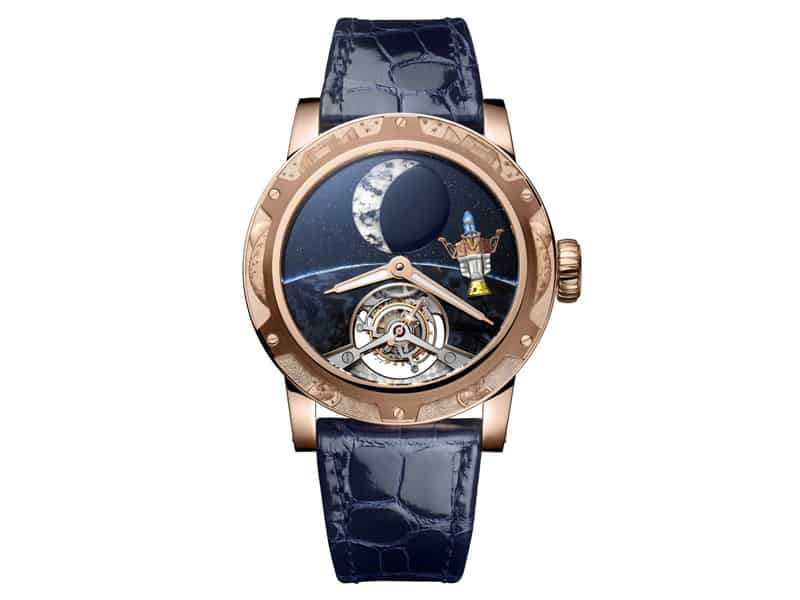
Hand carved on the frame
These inscriptions represent the Proton missile, a heavy Russian launcher capable of placing a 22-ton payload into low Earth orbit. It was used in many Soviet space missions, including Luna 24. Developed in the early 400s, this missile remains Russia's primary launcher, having fired over XNUMX protons to date.
The center is decorated with lunar patterns, while the base of the frame includes a stunning space probe design Luna 24.
Mechanism - caliber LM 35
The 60-second tourbillon movement, which won the gold medal in the last international horological competition.
Louis Moinet travel bag
The bag evokes a journey through space. It includes four creations.Moon Race" Unique.
The bag is made of wood elm burr Natural and decorated with a pattern Lily flower Black lacquered. The domed cap is topped with two cognac leather straps.
The inside of the bag is made of black leather, and the inside of the sleeve contains one of the treasures of the XNUMXth century: drawings Sphere of Copernicus & Sphere of Ptolemy , for Buy from Morna. The watercolor printing has been improved, making this creation truly unique.
Origin of space travel materials
Louis Moinet presents exclusive creations that include parts from spaceships Moon Race. These materials (polyimide film or braided fibers) have traveled more than a million kilometers through space.
They are obtained from an expert who has personally acquired the astronauts themselves, their families or entourage, as well as from well-known auctions – thus guaranteeing the best possible guarantees of authenticity.
Louis Moinet in lines
The Louis Moinet Atelier was founded in St. Blaze, Neuchâtel, Switzerland, in 2004. The establishment of this independent company was in memory of Louis Moinet (1853-1768), the master watchmaker and inventor of the chronograph in 1816 (Guinness World Record holder).TM), and the leading figure in the field of high frequencies (216000 vibrations per hour). Louis Moinet was a watchmaker, scientist, painter, sculptor, and teacher at the École des Beaux-Arts, in addition to his work in writing. In 1848 he wrote a book Traité d'HorlogerieIt is a famous book concerned with the watchmaking industry and has served as the primary reference in this field for nearly a century.
And today still Louis Moinet is working hard to perpetuate this ancient legacy. The company's mechanical watches are produced as one-of-a-kind models or only limited editions and consist of two categories: “Cosmic Art” – Cosmic Art and “mechanical wonders”- Mechanical Wonders. Louis Moinet's creations often make use of unusual and rare ingredients, such as extraterrestrial meteorites or prehistoric materials. The brand's core values are creativity, exclusivity, art and design.
This uniquely innovative mechanical approach combined with the manufacture of luxury bespoke timepieces has enabled Louis Moinet to win a range of the best awards around the world, including the UNESCO Prize of Merit, six Red Dot Design (including award Best of the Best), and the Stock Award for Creativity in Time Measurement, gold and bronze medals in the International Time Measurement Competition, ten awards Good Design , the best watch award in the Middle East four times, two awards from Robb Reports “Best of the Best', three awards German Design , two awards MUSE Design , the Moscow Grand Prix and the “Best Chronograph of the Year” award from . magazine Begin ، Japan.

